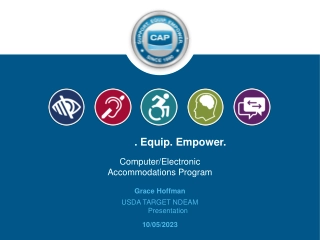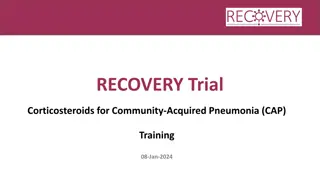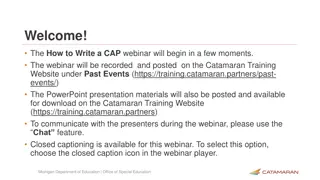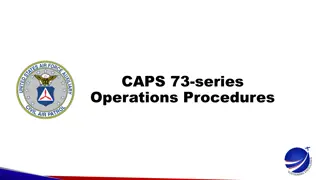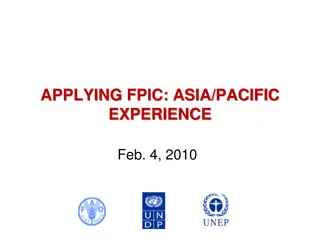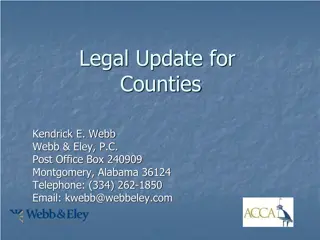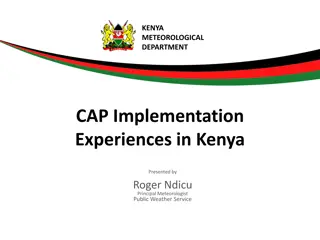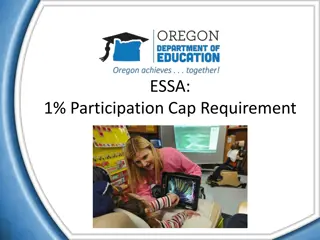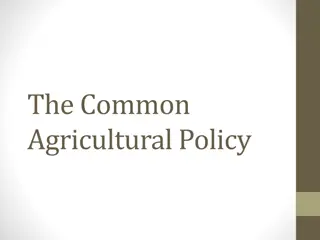
Canada's Draft UNDRIP Action Plan Engagement Details
Learn about Canada's Draft UNDRIP Action Plan, including the requirements, objectives, and current engagement process. Get involved in shaping the plan to address injustices, combat prejudice, promote mutual respect, and ensure accountability. Stay informed about the progress and how you can contribute.
Download Presentation

Please find below an Image/Link to download the presentation.
The content on the website is provided AS IS for your information and personal use only. It may not be sold, licensed, or shared on other websites without obtaining consent from the author. If you encounter any issues during the download, it is possible that the publisher has removed the file from their server.
You are allowed to download the files provided on this website for personal or commercial use, subject to the condition that they are used lawfully. All files are the property of their respective owners.
The content on the website is provided AS IS for your information and personal use only. It may not be sold, licensed, or shared on other websites without obtaining consent from the author.
E N D
Presentation Transcript
CAP National UNDRIP Engagement Have your say on Canada s Draft UNDRIP Action Plan
WHAT IS THE ACTION PLAN? The The United Nations Declaration on the Rights of Indigenous United Nations Declaration on the Rights of Indigenous Peoples Act Peoples Act requires the federal government to develop requires the federal government to develop an action plan by June 2023 to achieve the objectives an action plan by June 2023 to achieve the objectives of UNDRIP. of UNDRIP.
The action plan must include, but is not limited to, measures that: address injustices, combat prejudice and eliminate all forms of violence, racism and discrimination, including systemic racism and discrimination, against Indigenous peoples and Indigenous elders, youth, children, women, men, persons with disabilities and gender-diverse persons and two-spirit persons; promote mutual respect and understanding as well as good relations, including through human rights education; relate to monitoring, oversight, recourse or remedy or other accountability measures with respect to the implementation of the Declaration; and relate to monitoring the implementation of the plan and reviewing and amending the plan. 2
CAPs Engagement: CAP conducted two national pre-engagement sessions in March 2022, to provide recommended approaches on the development of the Action Plan These engagements informed a submission made to Justice in June 2022 CAP conducted an engagement session at the September 2022 AGA, which included over 100 delegates from PTOs Based on those discussions, CAP filed submissions to the federal government on what the Action Plan should include, in October 2022 CAP conducted an additional engagement session in December 2022 with further focus on structure, scope, and monitoring of the Action Plan Those discussions informed CAP s supplementary submissions to the federal government on the Action Plan, in December 2022 Many of the PTOs also provided written submissions through their own agreements or the public consultation CAP has maintained regular contact with DOJ and worked with other departments to advocate for the recommendations and measures submitted, and negotiate for CAP s inclusion in the Action Plan 4
What now? In March, CAP was provided with the What we Learned to Date report and the Draft Action Plan Also in March, Department of Justice (DOJ) officials attended CAP s Board of Directors meeting, where Board members provided initial feedback and comments on the Action Plan and Report DOJ has requested all further feedback from CAP by the beginning of May 2023 Feedback should identify gaps in the draft Action Plan and provide proposed additions or changes 5
CAPs Submissions There has been strong support in our communities for implementation of UNDRIP in Canada Community members lack confidence in government to implement UNDRIP Current distinctions-based approach must be abandoned excludes non-status and off-reserve peoples and discriminates among Indigenous peoples UNDRIP rights are not reaching CAP s community members: Freedom from discrimination Self-determination Self-government Participation in decision-making through chosen representatives/institutions Consultation and cooperation with Indigenous peoples through chosen representatives/institutions 6
CAPs Submissions (continued) The federal government discriminates between Indigenous peoples based on who it counts as Indigenous This violates Article 33 of UNDRIP: Indigenous peoples right to their own identity or membership in accordance with their customs and traditions and to select membership of their institutions in accordance with their own procedures 7
CAPs Recommendations CAP identified seven priorities for the federal government to address in the Action Plan: 1. Elimination of second-generation cut-off in the Indian Act 2. Inclusion of non-status Indians and off-reserve (non-MNC) M tis in the Post-Secondary Education Benefits and Non-Insured Health Benefits programs 3. Define Indigenous Governing Body in policy and legislation to include representative organizations like CAP and its PTOs. This would allow these organizations to administer programs or exercise legislative authority under federal legislation like the Act respecting First Nations, Inuit and M tis children, youth and families (Bill C-92) or the Indigenous Languages Act;
CAPs Recommendations (contd) 4. Abandonment of the distinctions-based approach to federal Indigenous policy. 5. Proactive measures to include CAP and its PTOs in all its legislative and administrative initiatives affecting Indigenous peoples; 6. Amendment of the UNDRIPAct to provide that it becomes self- executing; i.e. that an affected person or organization may seek relief in the Superior Courts if their rights under the Declarationare infringed; and 7. Engagement by the federal government with CAP and its PTOs prior to the release of the annual reports required by the UNDRIP Act.
The Draft Action Plan What it contains 1. Dedicated chapters for each of First Nations, Inuit, and Metis priorities (as defined and recognized under the distinctions-based approach) 2. A Shared Priorities section, addressing legislated priorities, including measures: 1. For ensuring Canada s laws are consistent with UNDRIP; 2. Addressing prejudice, violence, systemic racism, and discrimination 3. Promoting good relations through human rights education 4. For an oversight and accountability mechanism over implementation of UNDRIP; 5. Monitoring the implementation of the Action Plan. 9
The Draft Action Plan What it contains 3. A Shared Priorities section, addressing cross-cutting Indigenous priorities, including measures about: 1. Self-determination, self-government and recognition of treaties 2. Lands, Territories & Resources 3. Environment 4. Civil & Political Rights 5. Participation in decision-making and Indigenous institutions 6. Economic, health and social rights 7. Cultural, religious and linguistic rights 8. Education, information and media 9. Implementation and redress 9
The Draft Action Plan What it does NOT contain 1.Specific measures or chapters for CAP, non-status, or urban Indigenous peoples 2.Abandonment of the distinctions-based approach 3.Oversight over the implementation of UNDRIP and Action Plan that includes representation outside of AFN, ITK, MNC 4.Indian Act Reforms currently defined only as a First Nations Priority 5.Inclusion of non-status and Metis in programs such as the Post-Secondary Education Benefits and Non-Insured Health Benefits
The Draft Action Plan What it does NOT contain (contd) 6. Inclusive language to ensure that CAP s community members are captured within measures and are recognized as equal partners 7. Definitions 8. No draft in the following sections: 1. Vision for the Future 2. Shared Understandings/Principles 3. Chapter 3: Inuit Priorities 9. Full implementation of the Daniels decision, including recognition of rights, programs and funding for General List and non-status peoples (tied in to other measures like abandonment of distinctions-based approach, participation in decision-making, etc.) 10.Inclusion of Southern Inuit in PSEB, etc.
Why we are here How would you like to see your community s priorities reflected in CAP s submissions on the Draft Action Plan? What is missing from the Draft Action Plan? What changes would you like to see CAP suggest? 10
Cross-cutting priorities Self-determination, self-government and recognition of treaties Lands, Territories & Resources Environment (Pages 11-14) 11
Cross-cutting priorities Civil & Political Rights Participation in decision-making and Indigenous Institutions (Pages 15-17) 12
Cross-cutting priorities Economic, health and social rights Cultural, religious and linguistic rights (Pages 17-19) 16
Cross-cutting priorities Education, information and media Implementation and redress (Pages 19-20)
Legislated Priorities (Pages 6-10) Measures for ensuring that the laws of Canada are consistent with the UN Declaration Addressing injustices, prejudice, violence, systemic racism and discrimination Promoting mutual respect and understanding as well as good relations, including through human rights education Ensuring oversight and accountability on the implementation of the Declaration Monitoring the implementation of the Action Plan and reviewing and reviewing the Plan 15
Distinction Priorities Chapter 2: First Nations Priorities (Pg. 21-25) Chapter 3: Inuit Priorities (Pg. 26) Chapter 4: M tis Priorities (Pg. 27-29)
Questions? Other Comments? 19

